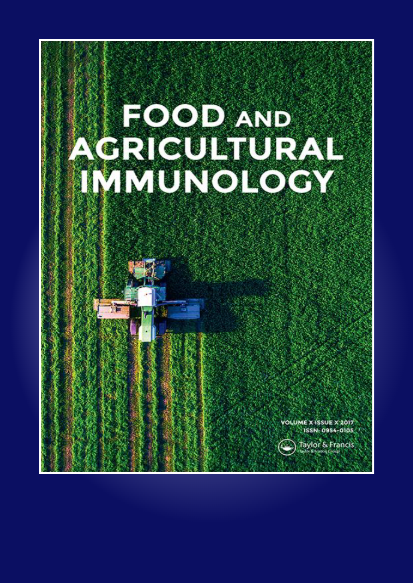A highly salt-tolerant monoclonal antibody-based enzyme-linked immunosorbent assay for the rapid detection of phenylethanolamine A in urine
IF 2.1
3区 农林科学
Q3 CHEMISTRY, APPLIED
引用次数: 3
Abstract
ABSTRACT Phenylethanolamine A (PEAA), as a typical β2-adrenoceptor agonist (β-AA), was widely illegally used in feed to improve the lean meat ratio. The detection performance of immunoassay, which is one of the effective methods to monitor PEAA residues in animal urine, has been hindered by high concentration of salt. Herein, we produced one highly salt-tolerant monoclonal antibody (mAb) 3E2 by hybridoma technology. Homologous modelling and molecular docking were used to analyse the antibody salt tolerance mechanism. Results show that the tight hydrophobic binding cavity is the key to high tolerance. Then the mAb 3E2 was used for specific detecting PEAA by enzyme-linked immunosorbent assay (ELISA) with the IC50 value of 0.36 ng mL−1and the LOD value of 0.065 µg L−1. Benefiting from the high salt tolerance of antibodies, swine urine and sheep urine spiked with PEAA can be detected directly by ELISA, and the acceptable recovery rates of 80.1–108.8% were obtained.基于高耐盐单克隆抗体的酶联免疫吸附法快速检测尿液中苯乙醇胺A
摘要苯乙醇胺A (PEAA)作为一种典型的β2-肾上腺素能受体激动剂(β-AA),被广泛非法用于饲料中以提高瘦肉比。免疫分析法是动物尿液中PEAA残留的有效检测方法之一,但高浓度盐的存在影响了其检测效果。本文利用杂杂瘤技术制备了一种高耐盐单克隆抗体(mAb) 3E2。采用同源建模和分子对接分析了抗体耐盐机理。结果表明,紧密的疏水结合腔是高耐受性的关键。采用酶联免疫吸附法(ELISA)特异性检测PEAA, IC50值为0.36 ng mL−1,LOD值为0.065µg L−1。利用PEAA抗体耐盐性强的特点,猪尿和羊尿中PEAA的可接受回收率为80.1 ~ 108.8%。
本文章由计算机程序翻译,如有差异,请以英文原文为准。
求助全文
约1分钟内获得全文
求助全文
来源期刊

Food and Agricultural Immunology
农林科学-毒理学
CiteScore
5.30
自引率
6.70%
发文量
52
审稿时长
2 months
期刊介绍:
Food and Agricultural Immunology is an international open access journal publishing original immunological research with applications in food, agricultural, environmental and veterinary science. Submissions describing the use of immunological techniques and methods are particularly welcomed.
The journal aims to expand our understanding of the interactions at the interface of food and immune systems including studies on:
-Development of diagnostic systems – all types of ligand-based assays, e.g. antibody, aptamer
-Application of ligand-based assays for the detection or identification of molecules of interest in food science, agricultural research, veterinary investigations and clinical systems relating to food allergy or sensitivity to agricultural chemicals
-Effects of food on the immune system
-Studies on allergy and allergic reactions
-Investigations into food allergies
-Development of allergen-free food systems
-Development of novel assay formats
-Applications of assay systems to the monitoring of food items in relation to safety and labelling
-Food quality issues, e.g. speciation, adulteration and contamination
-Comparisons between different analytical techniques
The journal publishes research and review articles and is essential reading for food scientists, immunologists and all those concerned with the interaction between food and immune systems.
 求助内容:
求助内容: 应助结果提醒方式:
应助结果提醒方式:


